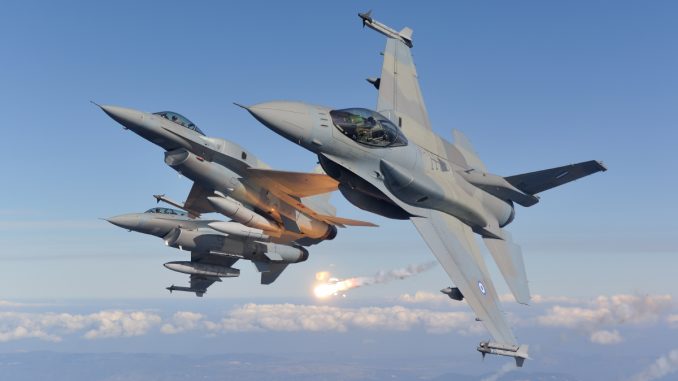
If there is a country that was affected by the 2008 crisis, it was Greece. The economic collapse, the increase in unemployment and the consequent drop in revenues stopped the investment in acquisitions of its Ministry of Defense in its tracks. After more than a decade of hardship in which both the capacity of the Greek Air Force and its future were called into question, they have finally begun to take the first firm steps to get out of the hole in which they found themselves. There have been years of contradictory information, rejected contracts and successive denials. At last, the Air Force (Polemikí Aeroporía) is emerging from its deep slumber and it does so with a single objective in mind: stopping Turkey.
Really, nothing else could be expected from Greece in recent years. Its situation, being worse, is not far from that experienced by Spain, where new acquisitions have been conspicuous by their absence, programs have been delayed and cuts have also been suffered. Unlike what happened in these parts, where we do not have the same perception of threats, the Greek awakening is occurring largely as a visceral reaction to to the bellicose aspirations of its Turkish neighbor and rival. That is why the Greek Government has decided to relaunch its military policy, especially in the air sector and specifically around its fleet of fighter-bombers. Fortunately for Greece, in a scenario as disputed as the Eastern Mediterranean, it has been able to achieve the support of various foreign powers, such as France, with which it shares interests and fears and which will be key in the event of a conflict with its Ottoman neighbor.
Throughout the next lines we are going to carry out a brief review of the current capabilities of the Greek Air Force, focusing mainly on its spearhead, that is, the fighter-bomber force, and devoting notable attention to what it really is. the star program of this effort: the modernization of its F-16s. Of course, without neglecting another program that has perhaps had a greater media impact: the acquisition of 18 Dassault fighter-bombers Flurry to France.
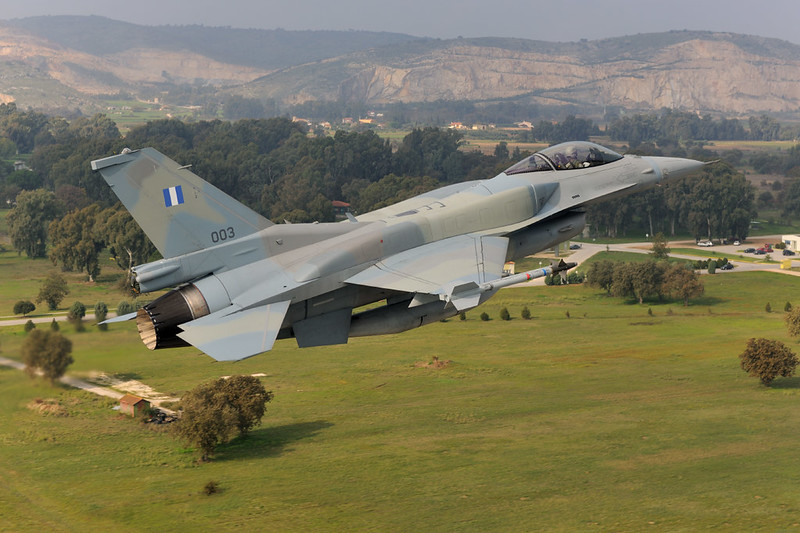
Devices in service
Let's start by talking about the oldest combat aircraft currently in service with the Greek Air Force: the evergreen McDD F-4 Phantom. Theoretically, currently they still have around 32 units in service, survivors of a batch that was deeply modernized more than 20 years ago.
In 1998, HAI (Hellenic Aerospace Industry) signed an agreement with the German company DASA to upgrade 39 airframes. F-4E to a new standard known as “Peace Icarus 2000”, where the incorporation of a variant of the multimode radar stood out AN / APG-65, similar to the one that equips our F/A-18M. All without neglecting the incorporation of another series of improvements, such as a new Mission Computer, HUD advanced, new equipment IFF (Identification Friend or Foe), multifunction data presentation screens, etc. In addition, it was trained to use more advanced weapons, such as medium-range missiles. Aim-120 Amraam, various guided bombs of the family Paveway or the advanced Bofors submunition-dispensing gliders DWS39, which offered an attack weapon stand-off quite powerful.
Given his advanced age - the first Phantom Greeks arrived in 1971, although they were complemented in the 90s with several examples of F-4F purchased second-hand Air force German-, in 2017 the progressive withdrawal of these devices began. It is expected that the last specimens will permanently disappear between 2023 and 2024.
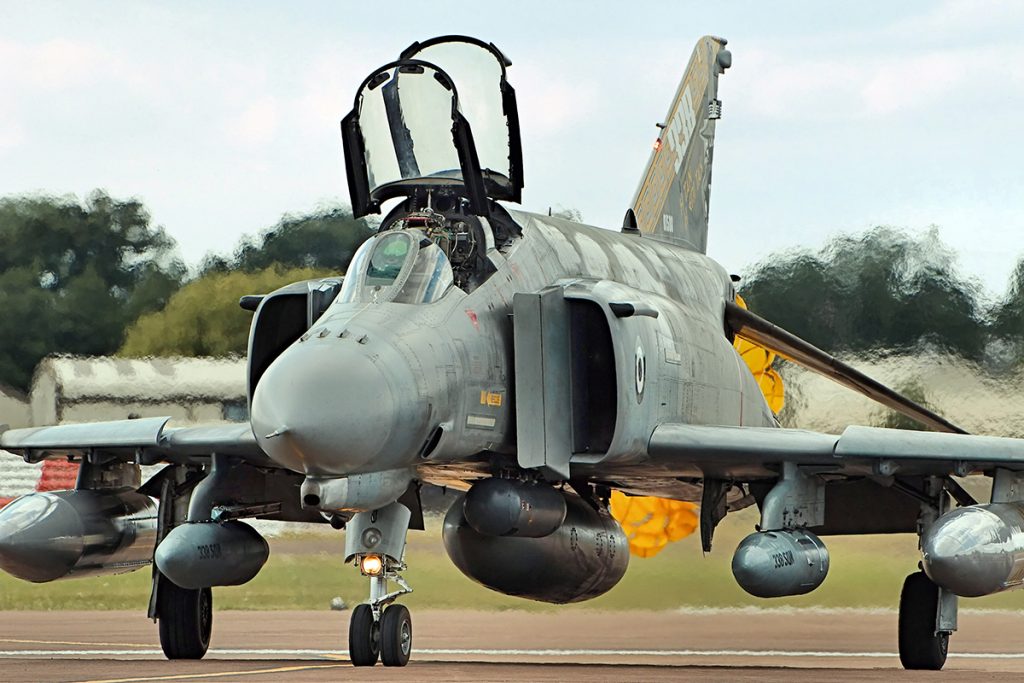
With a successful policy of “not putting all the apples in the same basket”, for more than 40 years Greece has always kept aircraft from different origins in service, just as Spain has done, at least so far. Currently, this task falls to the French representation, which makes up around two dozen of the beautiful Dassault Mirage 2000, belonging to the standard 2000-5F Mk2. Part of them -specifically 15 devices- were acquired new in 2004, while the rest are the result of the modernization of the previous ones. Mirage 2000EG/BG.
In addition, Greece maintains around 15 unmodernized Mirages, survivors of the original contract signed in the late 80s with Dassault for 36 single-seaters. Mirage 2000EG and 4 two-seaters 2000BG. This treaty was named “Talos” and are the ideal candidates to be replaced by the 18 Dassault Flurry Purchased just a few weeks ago. The fleet of The Mirage, modernized is considered a tactical-strategic asset within the Air Force, thanks to the deterrent effect it is called upon to have in the event of conflict, basing its power on the use of advanced MBDA cruise missiles Scalp-EG.
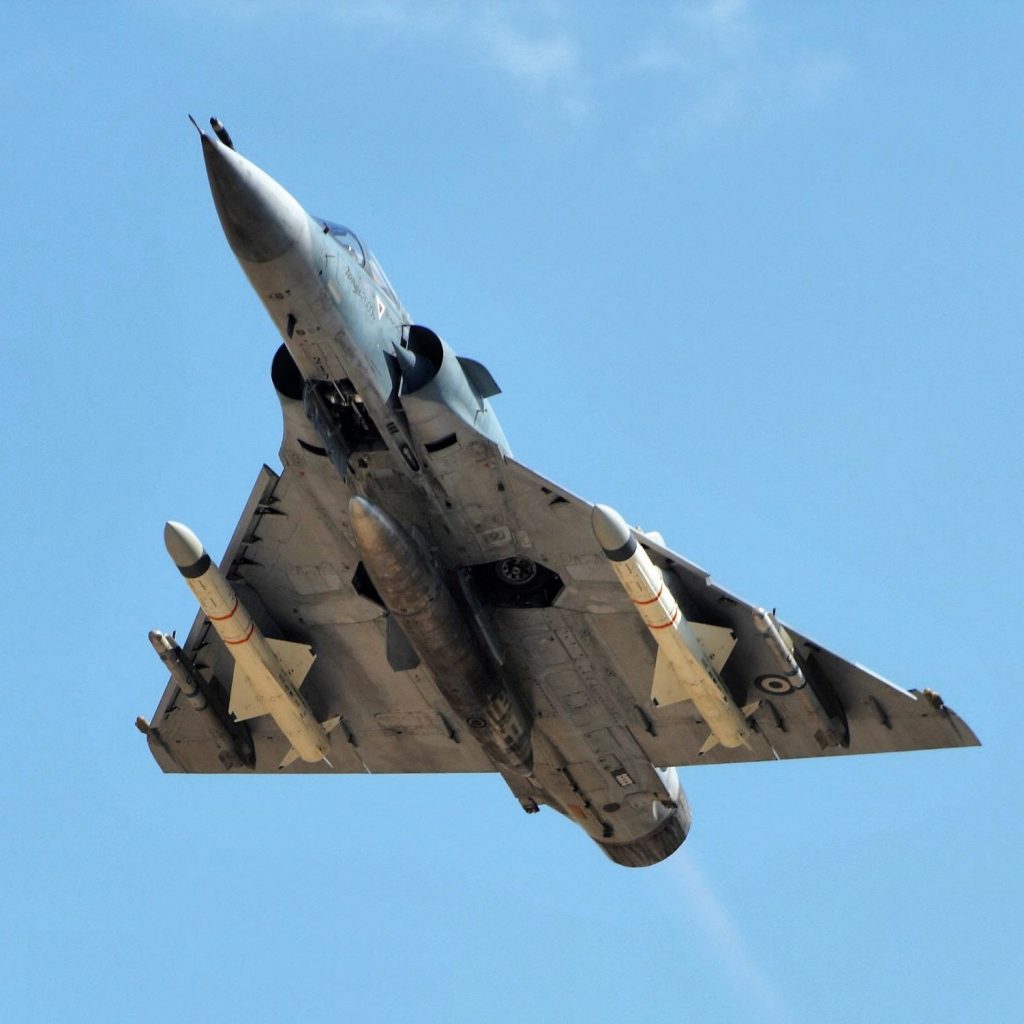
F-16 Fighting Falcon
Without a doubt, the backbone and the lion's share of the Greek fighter force is made up of the nearly 160 Lockheed F-16 Fighting Falcon acquired gradually over several decades, and which correspond to different Blocks. The first devices would arrive after signing the contract with the US “Peace Xenia I” in March 1985, and which was made up of 34 F-16C and 6 F-16D all belonging to the call Block 30. The first devices began to arrive in the country in January 1989 as a replacement for the old Northrop F-5A/B Freedom Fighter. This block was powered by the General Electric engine F110-GE-100, while the radar would be the AN/APG-68V(3).
We would have to wait until 1993 for the signing of its sequel, the “Peace Xenia II”, in which another 40 Falcon, this time from the most advanced Block 50, subdivided into 32 single-seat C and 8 two-seat D. The first devices would enter service in July 97 and arrived in Greece accompanied by numerous improvements: radar of the variant V(7), nacelles LANTIRN (Low Altitude Navigation and Targeting Infrared for Night) and more advanced weaponry such as Aim-120 Amraam y AGM-88 Harm (Greece assigned these devices to specialize in the fight against SAMs). On the other hand, the propulsion plant was the F110-GE-129, which was associated with improvements in performance and especially in terms of reliability.
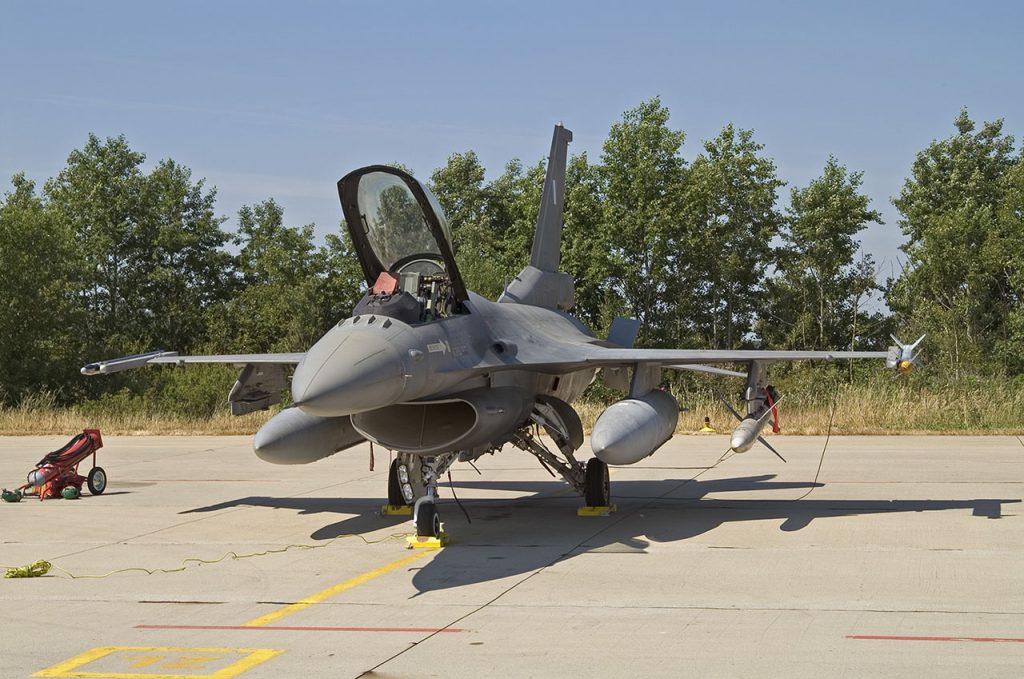
For the more observant, these two blocks can be distinguished from others F-16 that would arrive later due to having a larger air intake (called MCID Modular Common Inlet Duct). Likewise, the nozzle petals are noticeably longer and are made of carbon fiber). On the other hand, the Block 30 they lack the characteristic quartet of antennas AN/APX-113 belonging to the system IFF located in the nose in front of the pilot's cockpit, and that do appear in the following Falcon.
A year later the Greek Ministry of Defense studied the possibility of acquiring twenty F-16 second-hand from Belgium, the Netherlands or the country itself USAF. Mostly they were offered Block 30, which would be updated to a standard similar to Block 50, and with those who thought of replacing their antiquated Lockheed F-104 Starfighter. The negotiations progressed quite satisfactorily and the truth is that a contract would be signed with the US Government, agreeing on a unit price of 12 million dollars. In addition, they were intended to be used to fulfill the commitments NATO of use of nuclear weapons (with the use of bombs B61, provided by the EE. UU). However, finally said sale would be canceled and it was decided to allocate the resources to the acquisition of new aircraft.
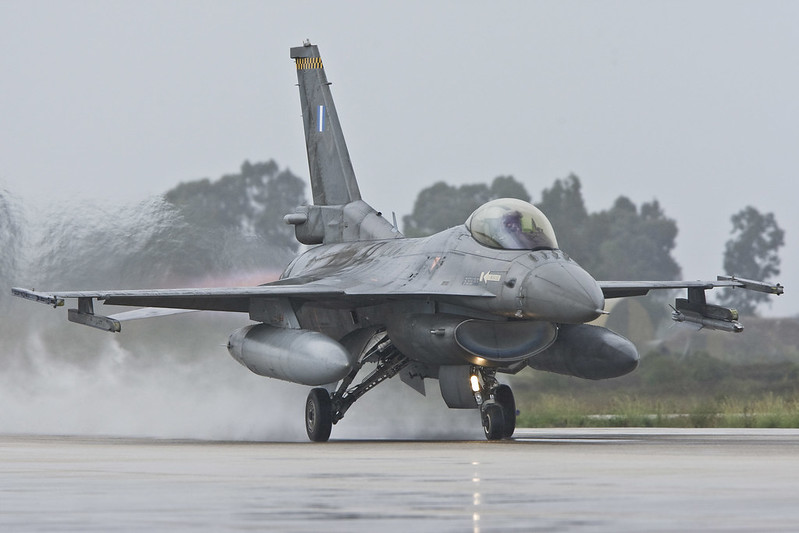
In the mid-90s, several candidates would be evaluated, from a specific variant of the Eagle called F-15H, Mirages 2000-5, the Eurofighter Typhoon, new F-16 Block 50 and even devices from the Sukhoi family Su-27/Su-30. The Greek Ministry of Defense planned to acquire 60 devices for about 17.000 billion dollars to be paid over a decade. The favorite candidate was F-15H, however, it had as an impediment its high cost (about 75 million dollars per unit at that time), on the contrary, the F-16 It was valued at about 45 and the Mirage 2000 in about 58 million. Finally, a kind of agreement was reached with the Eurofighter consortium, by which Greece would become a partner of the program with the acquisition (an agreement that included launching an assembly line in the country) of between 60 and 80 EF-2000 starting in 2005. Years later, the economic reality would overthrow these aspirations, since the enormous expenses caused by the organization of the 2004 Athens Olympic Games would frustrate any effort, forcing them to cancel the ambitious project.
Finally, in June 2000 the program would be launched Peace Xenia III, to acquire 50 new F-16 Block 52+ with the option of another 10 additional ones (which would finally be signed in September 2001). In total, 40 single-seaters and 20 two-seaters would end up arriving in Greece, all of them equipped with “humps”, the striking shaped tanks (CFT) that were located on the slender fuselage of the “Viper”, adding 440 gallons of fuel, at the cost of a minimal decrease in performance. Unlike previous Blocks, they were powered by Pratt & Whitney engines. F100-PW-229 (which implies the use of the model air intake NSI, Normal Shock Inlet), which are easily distinguishable by the nozzle petals, curved and made of titanium, and which are also shorter than those of General Electric engines. New avionics included helmets JHMCS (Joint Helmet Mounted Cueing System), night vision goggles and the variant V(9) of the radar AN / APG-68, which, thanks to a processing speed 5 times higher, allows a 30% increase in the detection range. Also new modes of employment, such as (Synthetic Aperture Radar) for the use of advanced munitions with greater precision and in adverse conditions, or a new method of searching for moving objects on the maritime surface. In addition, the use of glider bombs was permitted. AGM-154JSOW or JDAM. Finally, the new and advanced Diehl short-range missiles were integrated IRIS-T.
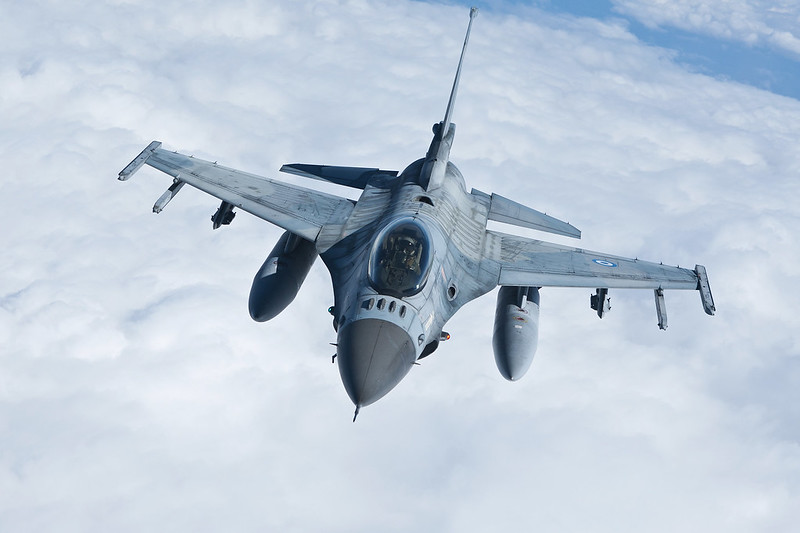
The first devices would be delivered in May 2003. A striking curiosity is that the F-16C/D Block 52+ of Squadron 343 have been the only Greek aircraft to participate in a Red Flag, specifically in 09-1 (2009). Unfortunately for the Hellenic pilots, and although they planned to maintain the pace with successive participations of other squadrons (or aircraft such as the Mirage 2000), the economic crisis cut short all expectations.
The cancellation of the contract with Eurofighter GmbH freed up funds to acquire other aircraft, so it was decided to launch the program “Peace Xenia IV”. In December 2005, 20 F-16C and 10 F-16D. All of them were also from Block 52+ but from a subvariant called “Advanced” (the mother company, Lockheed, baptized them as Block 52M). They are powered by Pratt & Whitney engines. F100-PW-229 and equipped with Link 16 (which provides greater communication capacity between devices and/or personnel on the ground and improves situational awareness during a mission), as well as a new cockpit. The contract included an option for 10 additional aircraft, which was never executed. The first were delivered in May 2009 and were replacements for the last Vought A-7 Corsair II in service, whose official discharge would occur in October 2014.
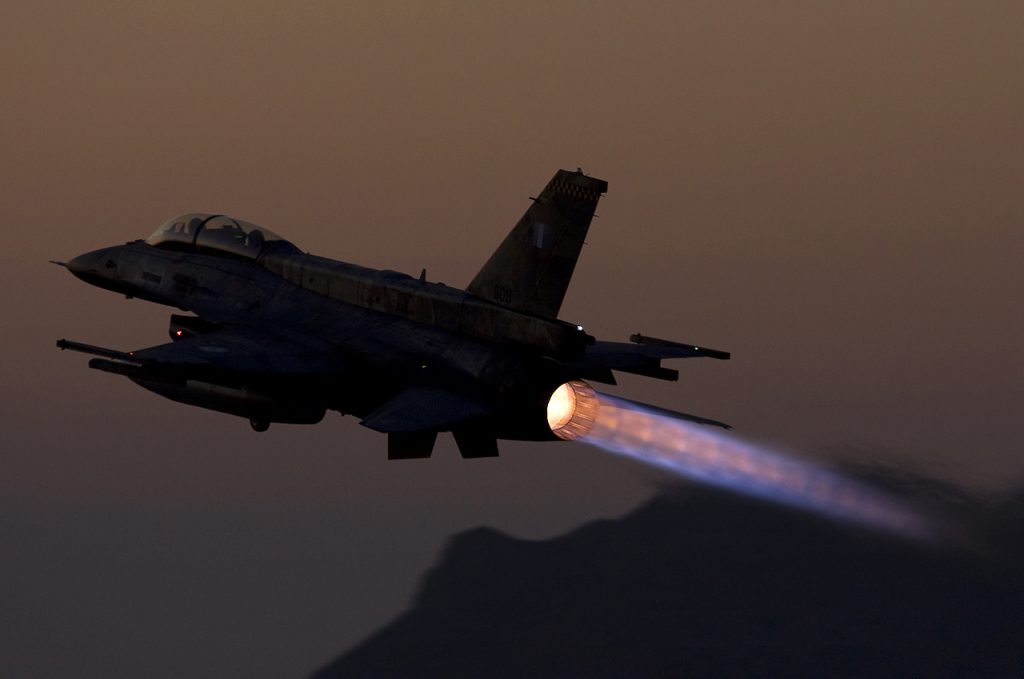
Despite the economic constraints, at the beginning of 2007 the Supreme Council of the Greek Air Force published an operational guide in which it was planned, as a medium-term objective, to obtain an operational capacity with around 300 advanced 4th or 5th generation aircraft. . Therefore, a hundred new devices were needed (to which would be added the F-16 and Mirage 2000 already in service).
Dassaults appeared among the candidates being considered. Flurry, F/A-18E/F SuperHornet, F-35 Lightning II or the Russian models MiG 35 y Su-35. As we know, the financial crisis would end up becoming entrenched, which would ruin growth plans, and would even cause a large part of the fleet of F-16 was temporarily grounded due to a shortage of spare parts and the necessary budget for maintenance and operation. Luckily, a slight recovery would begin around 2015, which made it possible to allocate 180 million euros to recover operations, acquire spare parts and return numerous units to the air.
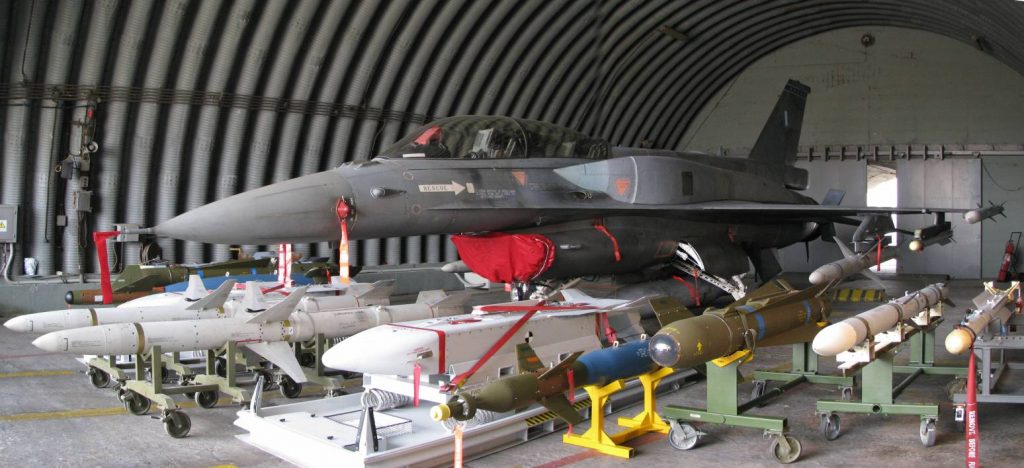
Finally, in 2018, the most ambitious program to date would be signed: the modernization of 84 F-16C / D of the Block 52+ and 52+ Advanced to the new standard developed by Lockheed Martin, named F-16V Block 72 and whose first client had been Taiwan. A problem to which we will dedicate a specific section later.
In short, Greece has received no less than 170 F-16 over several decades. The survivors currently operate in eight squadrons spread across four Air Bases. The Falcon Greeks present an attractive camouflage in various shades of blue and gray, called “Ghost”. On the other hand, they all have an extension in the lower part of the drift, where the braking parachute and part of the electronic warfare system are accommodated. ASPIS (Airborne Self-Protection Integrated Suite).
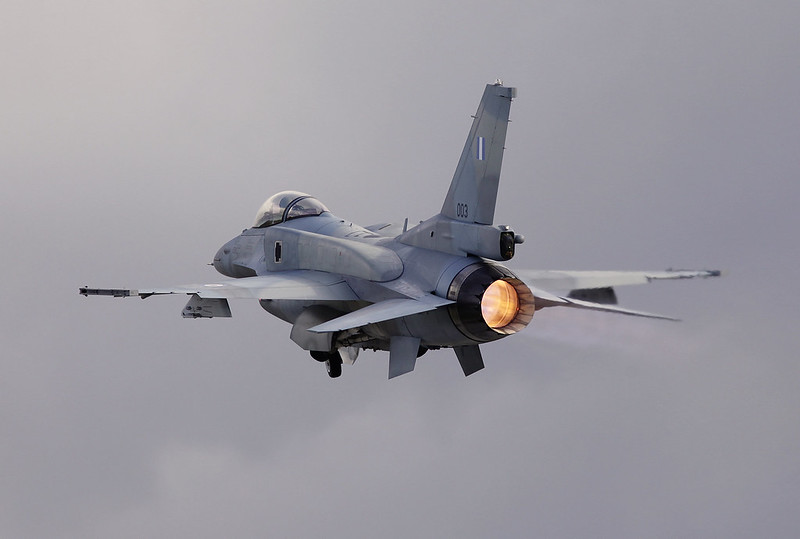

Be the first to comment